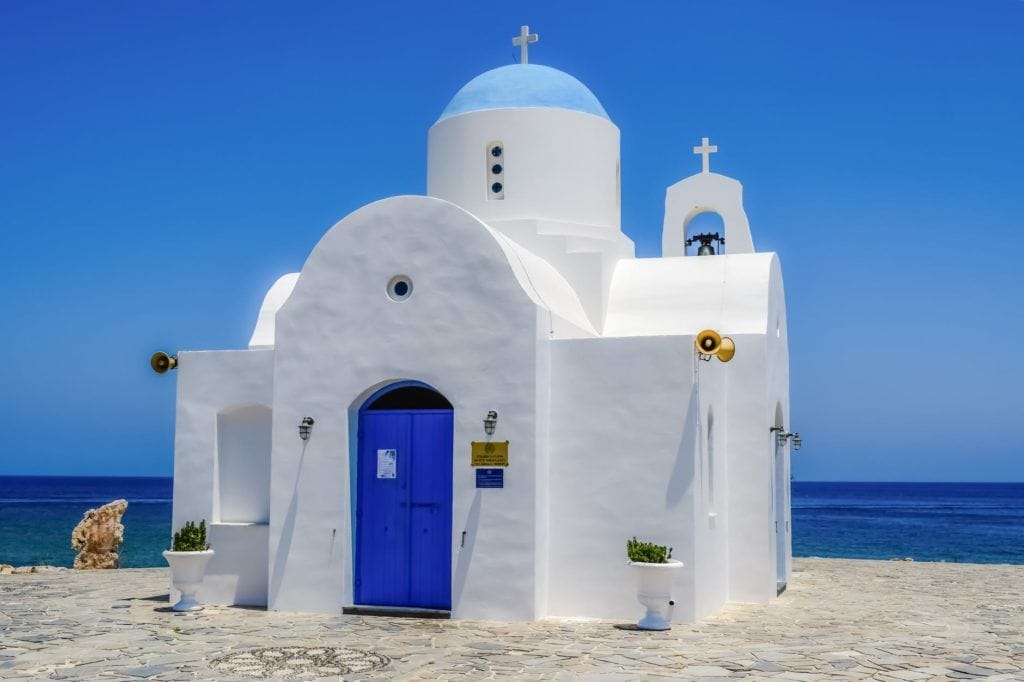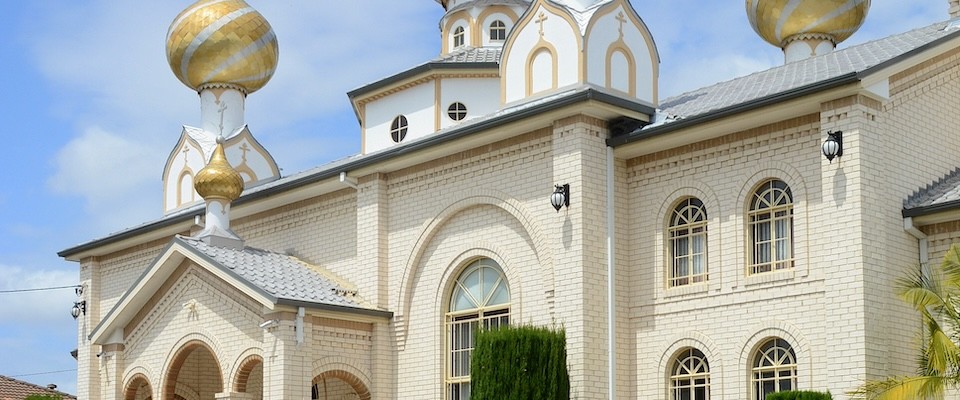18 Things You Can Learn from A Monk of the Eastern Church

Mystical. Passionate. Spiritual. Cranky. Monastic. Urban. Greek Orthodox. Catholic. French. English.
Anonymous. . .
. . . Lev (Leo) Gillet.
All of those words describe an unusual man who would become known to readers as “A Monk of the Eastern Church.”
He was born in France in 1893. Shortly before World War I, he became interested in a Bulgarian girl, so he tried to learn Bulgarian. When he couldn't find a teacher, he learned Russian instead.
He permanently lost touch with the girl when World War I broke out. He served in the French army. He was taken prisoner by the Germans almost immediately and would be a POW for three years.
During that time, he intermingled with soldiers from other countries and befriended many Russians, which furthered his studies in their language.
After the War, he entered the Benedictine Order as a novice. After a visit from the great Uniate (Eastern Catholic) leader, Andrei Sheptytsky, he travelled to a small Byzantine Catholic monastery in Ukraine and made his permanent monastic profession there.
But he didn't stay. He really wanted to bring the eastern and western churches together, and he thought he could do that best in western Europe, which had received a huge stream of Russians who were forced to flee after the Marxists took over (if you want to get a feel for this swell of Russian immigrants fleeing Communism, check out Season Five of Downton Abbey).
Back in France, he became attached to the Russian emigre community. In 1928, he was received into the Orthodox Church.
But he didn't leave the Roman Catholic Church. His “reception” into the Orthodox Church occurred simply by concelebrating an Orthodox Mass.
The usual formalities required of Roman Catholic converts to Orthodoxy were omitted. Fr. Lev made no abjuration of errors and underwent no rite of reception, but was simply admitted to Eucharistic concelebration and communion. For him this remained always a point of major significance. . . [H]e never denied the ecclesial reality of the Roman Catholic Church, nor his own continuing unity with Rome on an invisible, spiritual level.
Kallistos Ware
His awkward stance–one foot in the West, one foot in the East–was never resolved, even for himself. He considered himself “a catholic priest in full communion with the Slavic Orthodox Church” (his words).
Neither church really knew how to think of him. One of his friends years later even maintained that Fr. Lev was practically a Catholic spy and had “infiltrated” the Orthodox Church.
Regardless, Fr. Lev fully immersed himself in the Russian religious renaissance that spread across western Europe in the wake of the Marxist terror and, later, Canada and the United States (think: Catherine de Hueck and Madonna House), becoming friends with Paul Evdokimov, whose Ages of the Spiritual Life is considered a twentieth-century spiritual classic.
In 1938 he moved to Britain. He held a research fellowship in Birmingham until 1948, when he was appointed a chaplain to the Fellowship of St. Alban and St. Sergius, an organization dedicated to bridging Catholicism and Orthodoxy. The organization is located in Oxford, but it maintained a center in London, where Fr. Lev lived and researched the rest of his days (subject to many, frequent, trips to other countries).
He apparently loved London. People would find him in the Reading Room of the British Museum, where he worked almost every day. If he didn't know you, he probably seemed like a moody curmudgeon. If he knew you . . . or if you were destitute, sick, or living on the streets . . . he was very friendly. He loved to wander London's streets and enjoyed his life as an “urban monk.”
While living and studying in London, he produced a handful of books, the best known of which is The Jesus Prayer, which has helped propel the popularity of that ancient prayer practice beyond Orthodoxy.
He died in 1980.
18 Facts, Observations, and Pieces of Advice from Fr. Gillet
Combining Two Practices
From its early days, Christians invoked the name of Jesus. Monks and hermits also practiced short prayers, like arrows shot to the heart of God. Kyrie eleison (Lord, have mercy), for instance. It was Hesychasm that combined the two practices.
Hesychasm
Hesychasm has been defined variously, but Fr. Lev says hesychia means “repose.” It is a practice that “insists on withdrawal, and a rigorous separation from the world, almost a severing of all human contacts.” Instead of fasts and ascetical practices, it emphasizes prayer, contemplation, and the mystical life. In this regard (and this is key to the definition), it emphasized specific methods of prayer to develop the contemplative technique. The main method: combining the name of Jesus to one's breath.
The Jesus Prayer
The Centuries by St. Hesychius is one of the most important texts in the history of the Jesus Prayer, but it wasn't really written by St. Hesychius. It was probably the work of a team of monks. Regardless, the work is important for many reasons, and in particular for its admonition that one shouldn't just unite the name of Jesus to one's breathing, but to one's entire life. Every waking moment. The work is also significant because it is the earliest known work to use the phrase “Jesus Prayer.”
Symeon
St. Symeon the New Theologian is the greatest name in Byzantine spirituality after the Church fathers. He's huge. But he might be one of the biggest reasons that the Roman Catholic and Orthodox churches are still apart. St. Symeon emphasized mystical experience, which gave rise to the Orthodox tendency to give primacy to the spiritual over the institutional and to prefer contemplation to the active life.
To Russia
The Jesus Prayer spread from Mt. Athos, where its practice had been revived by St. Gregory of Sinai, to the Slavic world and eventually to Russia in the early 1400s. (For those interested in J.D. Salinger, this is significant. His Franny and Zooey revolved around the character Franny's obsession with the Jesus Prayer and the beautiful story, The Way of a Pilgrim. Without Gregory of Sinai and Mt. Athos, possibly no Franny and Zooey.)
Athos
Mount Athos declined somewhat importance from about 1400 to 1750ish, but then two monks, St. Macarius of Corinth and St. Nicodemus of the Holy Mountain, met on Mount Athos. Together, they produced the Philokalia, which is arguably the greatest spiritual work in the history of Christianity. The work highlighted Mount Athos as one of the holiest places on earth.
Nicodemus of the Holy Mountain
Where are the Hesychasts today? They're all over the place and not just among the Orthodox. Catholics are practicing it. Many people practice the Jesus Prayer, combining the name of Jesus with their breath, trying to unite the name of Jesus to their heartbeat so they can carry the Name with them throughout their everyday lives, like the Russian Pilgrim who carried it within him as he tramped throughout Russia. Nicodemus of the Holy Mountain, however, is historically the last of the Hesychasts.
12 Words
Nicodemus' formula for the Jesus Prayer was, “Lord Jesus Christ, Son of God, have mercy on me.” The additional words, “a sinner,” were added later by combining the cry of the two blind men in Matthew 9:27 and of the publican in Luke 18:13.
Russian Rosary
The Orthodox use a rosary to count the number of Jesus Prayers. They've been doing so since the Middle Ages. Today, the Russian rosary is composed of 107 knots: one large knot and 17 small knots, then two large knots and 33 small knots, then one large knot and 40 small knots, then one large knot and 12 small knots. (One thing Fr. Gillet isn't clear on: how to say the Russian rosary. It's clearly driven by the Jesus Prayer, laced with other prayers, but he's not clear about which knot (bead) is which. See The Jesus Prayer (St. Vladimir's Seminary Press, 1987), p. 72, fn. 8.
Caution
Even though Fr. Gillet revered the Jesus Prayer, he cautioned Christians about getting too caught up in it, especially its psychosomatic methods and expectations, unless (perhaps) one is led by an experienced spiritual director who is knowledgeable in such things. It's better simply to practice the Jesus Prayer “lightly” (my word, not Fr. Gillet's), and realize that “every Christian can attain to the summits of the Jesus Prayer with no other 'technique' except that of love and obedience.” Id at 74.
Eliminate Negativity
Do you struggle with negative bias? “Negative bias” is the natural tendency we have to pay attention to disagreeable thoughts, simply because they're more powerful than powerful ones. Fr. Gillet says The Jesus Prayer might be the answer: The Jesus Prayer “saves one from many uncharitable, vain words or thoughts.”
Open Invitation
Practice the Jesus Prayer and let it practice on you. Follow formulas and meet certain numbers at times, but welcome it when it appears informally. Give is an open invitation, in whatever form it presents itself.
Zossima
The great Russian mystic, Tikhon of Zadonsk (1724-1783), was the real-life counterpart of Fr. Zossima in Dostoyevsky's The Brothers Karamazov (Orthodox Spirituality, SVP, 5).
Apathy?
Apatheia is not apathetic indifference. It is “the state of a soul in which love towards God and men is so ruling and burning as to leave no room for human (self-centered) passions.”
Mystical
The mystical life is simple to understand: It's a life in which the virtues of the Holy Spirit predominate over human efforts and infused virtues predominate over acquired ones.
Simplicity
The prayer of simplicity is the first frontier of contemplation. The prayer of simplicity is merely placing yourself in the presence of God and maintaining yourself there for a certain period of time, keeping interior silence as much as possible, while concentrating on “the divine Object.”
Custody
Custody of the heart is simply the “strict and permanent control of the imagination.”
Look at Jesus
Spiritual victory always looks at Jesus, not the temptations or obstacles that were overcome.
Related





